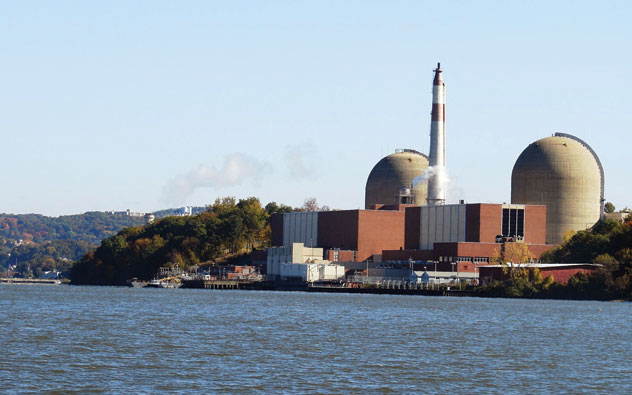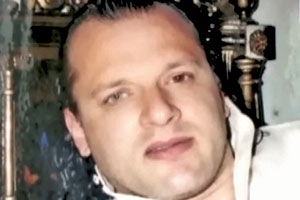SUBCONTINENT:
Terror Threat: India's Nuclear Plants in Danger
The recent revelations by David Headley have set terror bells ringing in the ears of the Indian government. He said he had visited a nuclear plant in India prior to the Mumbai attacks, suggesting that an attack on a nuclear settlement is possible, writes Siddharth Srivastava.

(Above): An Indian Nuclear Power plant.
The latest revelations about David Headley suggest that the Pakistani-American jehadist visited a nuclear power plant in India ahead of the brazen November 2008 Mumbai terror attacks.
These have added a new dimension to the safety debate centered round India’s big atomic energy plans following the nuclear crisis in Japan.
India aims to produce 20,000 MW of nuclear power by 2020 and 63,000- MW by 2032. India’s atomic energy market is estimated in the range of U.S. $150-200 billion predicted to rise to U.S. $500 billion if plans are implemented as targeted.
India has signed civil nuclear deals with countries such the U.S., France, Namibia, Mongolia, Russia, Kazakhstan, Canada, Angola, South Korea, UK and the European Atomic Energy Community for various aspects of nuclear power generation cycle including installation of reactors and import of uranium.
 (Right): David Headley (Right): David Headley
It is after several years of aggressive diplomatic moves and help from America that India managed to win itself a nuclear exception status despite refusing to sign global non-proliferation treaties such as NPT and CTBT.
However, the calamity in Japan and its consequent struggle to avert an earthquake-tsunami induced nuclear crisis has raised safety related questions about India’s massive atomic energy plans as a green and safe source of power.
The prospects of a terror strike on a nuclear installation can also be a major disaster in the making. According to released court documents in Chicago, terrorist Headley aka Daood Gilani visited an unnamed India nuclear power plant in India in April 2008 at the instance of his Inter-Services Intelligence (ISI) handler in Pakistan, Major Iqbal, who also gave him Indian currency notes for expenses in the country.
Headley, who has pleaded guilty in helping the militant Pakistani-based Lashkar-e-Taiba (LeT) with carrying out the Mumbai attack, spent time in India’s financial capital in April 2008, made videos of potential landing sites for terrorists on boats from Pakistan and took pictures of the city harbor.
“Headley also performed surveillance of the Chhatrapati Shivaji Terminus (CST) train station (that was later attacked). Headley returned to Pakistan and met with Zaki, Sajid, Abu Qahafa, and another Lashkar member,” the court submissions said.
In his testimony before the Chicago court, Headley has said that he was also plotting to assassinate prominent political leaders in Mumbai on behalf of the LeT. As a fall out of the revelations, the Maharashtra state intelligence department is reviewing security arrangements of the potential targets in Mumbai that Headley claims to have surveyed.
In these contexts, there is no way to know whether the latest nuclear technologies will stand up to an apocalyptic disaster situation as happened in Japan or a terror attack as they have not been tested.
Given India’s high population density an accident could be a calamity as happened following the Bhopal gas tragedy in 1984.
Some analysts say given the non-transparent nature of India’s state-controlled nuclear energy sector - there is no way to estimate whether safety issues will be carefully followed. Data on the sector is closely guarded by the nuclear establishment, which functions under the close purview of top government departments, including the Prime Minister’s Office.
Some of the atomic plants, including the proposed 9500 MW Jaitapur station in Maharashtra being constructed by the French firm Areva and in Tamil Nadu will be built along coastal areas, given the large consumption of water by nuclear plants.
Coastal areas are considered to be particularly vulnerable to amphibious militant attacks, especially in the wake of Mumbai 26/11.
In Jaitapur, villagers in the vicinity have also been opposing the project on environment and rehabilitation issues. Regional political parties in Maharashtra have voiced concern following the Japan calamity. Activists have warned that the massive Jaitapur project falls in a high seismic zone.
Indeed, despite the miniscule role of atomic power in India’s energy mix till now, there have been negative fallout instances. In the early 1990s, the Tarapur plant near Mumbai leaked radioactivity from faulty cooling systems.
Incidents of genetic disorders have been recorded in populations at Rawatbhata in Rajasthan state and in the sea near Kalpakkamd.
In the 1990s, the former chairman of the Atomic Energy Regulatory Board, A Gopalakrishnan, expressed fears about the safety status of some nuclear installations under the DAE.
The Indian chapter of the International Physicians for Prevention of Nuclear War, in a 2008 survey, found that “sterility was found to be more common in people residing near uranium mining operations.” Birth defects and congenital deformities followed a similar pattern.
Indian officials and some experts, meanwhile, say unlike in Japan all of India’s NPPs except Narora in Uttar Pradesh are situated in the moderately seismic Zone 3, thus ruling out an 8.9 magnitude earthquake. No NPP is located at the highly seismic Himalayan region.
Further, the Narora NPP has not been damaged despite facing several tremors over the last two decades, including one of 6.3 magnitude. The 6.7 magnitude quake that hit Gujarat in 2001 did not impact the Kakrapur NPP.
During the 2004 tsunami, the Kalpakkam NPP in Tamil Nadu went through an automatic shutdown process.
Yet, fears of a terror attack given Headley’s confessions raises another set of doubts about “safety” factor of India’s nuclear power plants, planned or already operational.
|